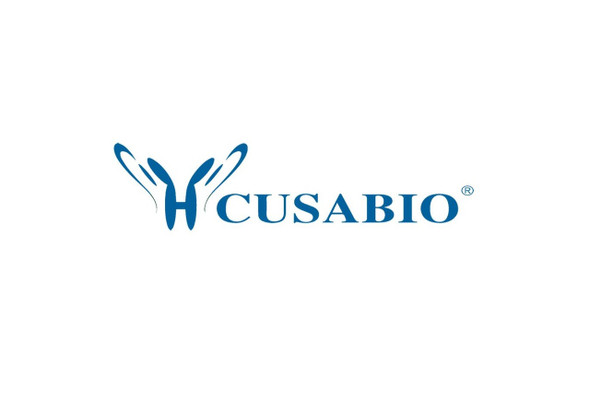Cusabio Rattus norvegicus Recombinants
Recombinant Rat TGF-beta receptor type-2 (Tgfbr2), partial | CSB-EP023452RA1
- SKU:
- CSB-EP023452RA1
- Availability:
- 13 - 23 Working Days
Description
Recombinant Rat TGF-beta receptor type-2 (Tgfbr2), partial | CSB-EP023452RA1 | Cusabio
Alternative Name(s): TGF-beta type II receptor (Transforming growth factor-beta receptor type II) (TGF-beta receptor type II) (TbetaR-II) (TGFR-2)
Gene Names: Tgfbr2
Research Areas: Signal Transduction
Organism: Rattus norvegicus (Rat)
AA Sequence: IPPHVPKSVNSDLMAGDNSGAVKLPQLCKFCDVTLSTCDNQKSCMSNCSVTSICEKPQEVCVAVWRKNDKNITLETVCHDPKFTYHGFTLEDATSPTCVMKEKKRAGETFFMCSCNTEECNDYIIFNEEYTTSSPDLLLVIIQ
Source: E.coli
Tag Info: N-terminal 10xHis-tagged and C-terminal Myc-tagged
Expression Region: 24-166aa
Sequence Info: Partial
MW: 21.0 kDa
Purity: Greater than 85% as determined by SDS-PAGE.
Relevance: Transmembrane serine/threonine kinase forming with the TGF-beta type I serine/threonine kinase receptor, TGFBR1, the non-promiscuous receptor for the TGF-beta cytokines TGFB1, TGFB2 and TGFB3. Transduces the TGFB1, TGFB2 and TGFB3 signal from the cell surface to the cytoplasm and is thus regulating a plethora of physiological and pathological processes including cell cycle arrest in epithelial and hematopoietic cells, control of mesenchymal cell proliferation and differentiation, wound healing, extracellular matrix production, immunosuppression and carcinogenesis. The formation of the receptor complex composed of 2 TGFBR1 and 2 TGFBR2 molecules symmetrically bound to the cytokine dimer results in the phosphorylation and the activation of TGFRB1 by the constitutively active TGFBR2. Activated TGFBR1 phosphorylates SMAD2 which dissociates from the receptor and interacts with SMAD4. The SMAD2-SMAD4 complex is subsequently translocated to the nucleus where it modulates the transcription of the TGF-beta-regulated genes. This constitutes the canonical SMAD-dependent TGF-beta signaling cascade. Also involved in non-canonical, SMAD-independent TGF-beta signaling pathways.
Reference: "TGF-beta receptor types I and II are differentially expressed during corneal epithelial wound repair." Zieske J.D., Hutcheon A.E., Guo X., Chung E.H., Joyce N.C. Invest. Ophthalmol. Vis. Sci. 42:1465-1471(2001)
Storage: The shelf life is related to many factors, storage state, buffer ingredients, storage temperature and the stability of the protein itself. Generally, the shelf life of liquid form is 6 months at -20?/-80?. The shelf life of lyophilized form is 12 months at -20?/-80?.
Notes: Repeated freezing and thawing is not recommended. Store working aliquots at 4? for up to one week.
Function: Transmembrane serine/threonine kinase forming with the TGF-beta type I serine/threonine kinase receptor, TGFBR1, the non-promiscuous receptor for the TGF-beta cytokines TGFB1, TGFB2 and TGFB3. Transduces the TGFB1, TGFB2 and TGFB3 signal from the cell surface to the cytoplasm and is thus regulating a plethora of physiological and pathological processes including cell cycle arrest in epithelial and hematopoietic cells, control of mesenchymal cell proliferation and differentiation, wound healing, extracellular matrix production, immunosuppression and carcinogenesis. The formation of the receptor complex composed of 2 TGFBR1 and 2 TGFBR2 molecules symmetrically bound to the cytokine dimer results in the phosphorylation and the activation of TGFRB1 by the constitutively active TGFBR2. Activated TGFBR1 phosphorylates SMAD2 which dissociates from the receptor and interacts with SMAD4. The SMAD2-SMAD4 complex is subsequently translocated to the nucleus where it modulates the transcription of the TGF-beta-regulated genes. This constitutes the canonical SMAD-dependent TGF-beta signaling cascade. Also involved in non-canonical, SMAD-independent TGF-beta signaling pathways (By similarity).
Involvement in disease:
Subcellular Location: Cell membrane, Single-pass type I membrane protein, Membrane raft
Protein Families: Protein kinase superfamily, TKL Ser/Thr protein kinase family, TGFB receptor subfamily
Tissue Specificity:
Paythway:
Form: Liquid or Lyophilized powder
Buffer: If the delivery form is liquid, the default storage buffer is Tris/PBS-based buffer, 5%-50% glycerol. If the delivery form is lyophilized powder, the buffer before lyophilization is Tris/PBS-based buffer, 6% Trehalose, pH 8.0.
Reconstitution: We recommend that this vial be briefly centrifuged prior to opening to bring the contents to the bottom. Please reconstitute protein in deionized sterile water to a concentration of 0.1-1.0 mg/mL.We recommend to add 5-50% of glycerol (final concentration) and aliquot for long-term storage at -20?/-80?. Our default final concentration of glycerol is 50%. Customers could use it as reference.
Uniprot ID: P38438
HGNC Database Link: N/A
UniGene Database Link: UniGene
KEGG Database Link: KEGG
STRING Database Link: STRING
OMIM Database Link: N/A






